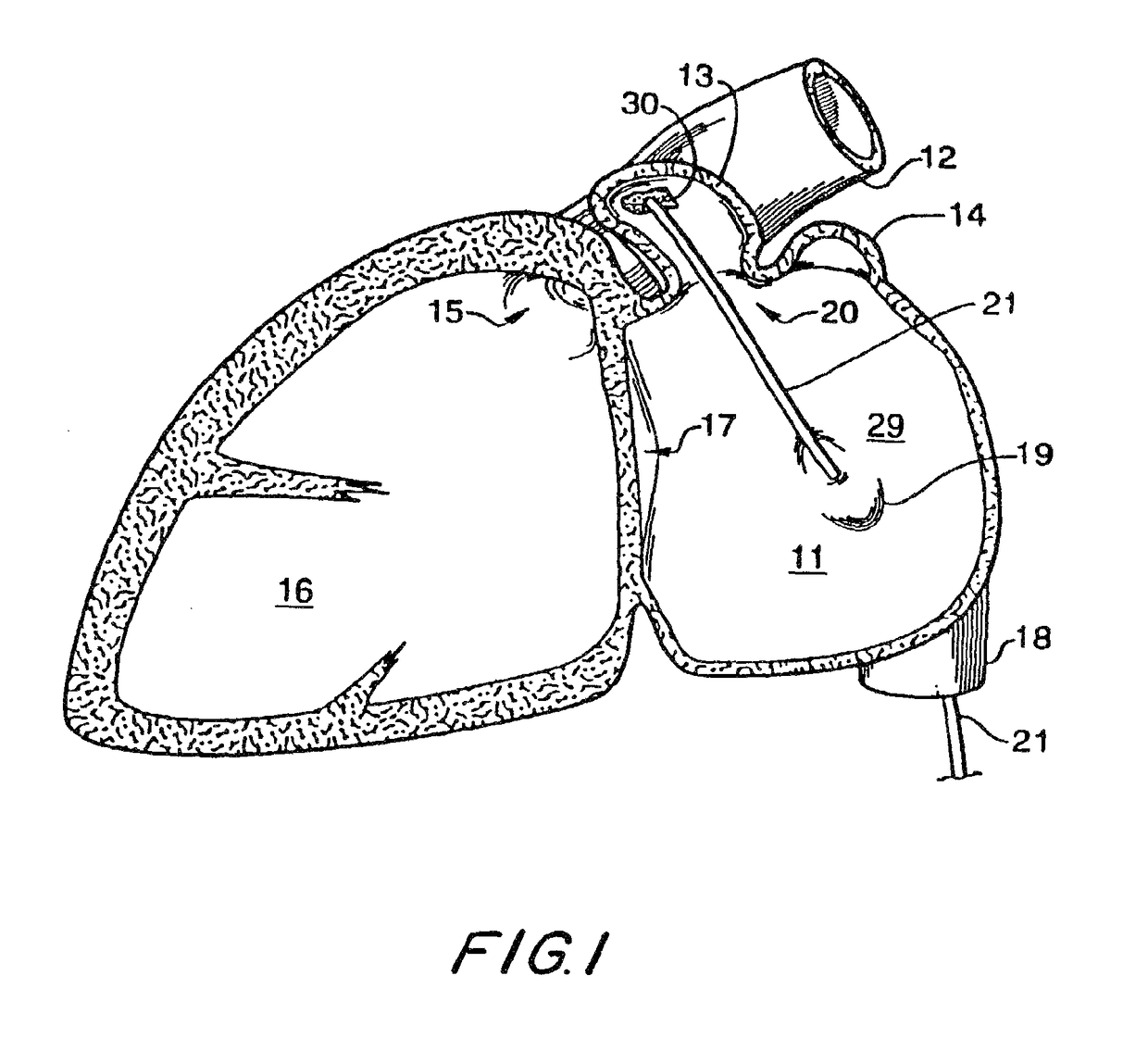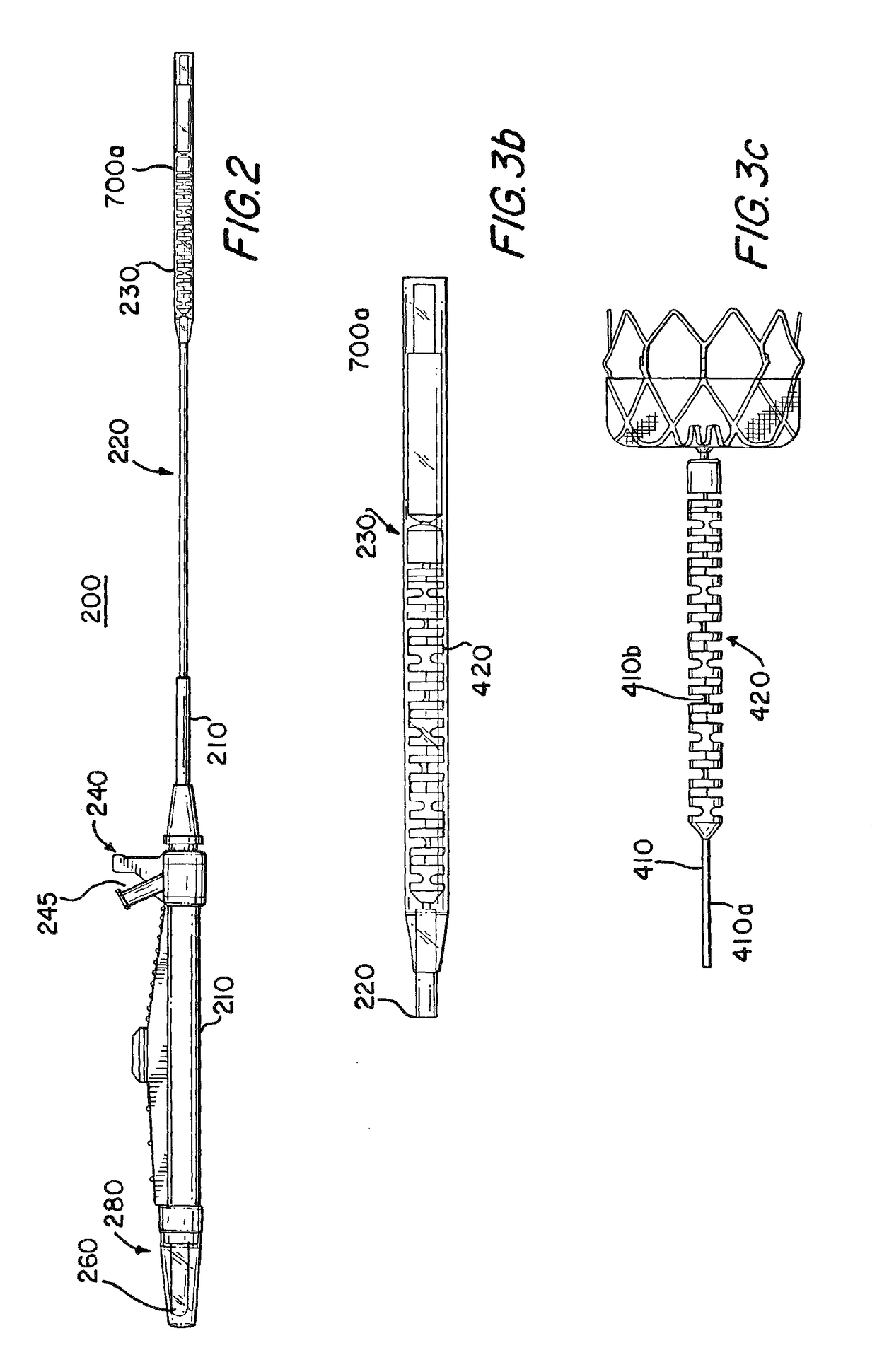Atrial appendage blood filtration systems
a technology of atrial appendage and filtration system, which is applied in the field of cardiac blood flow filtration, can solve the problems of atrial fibrillation, loss of circulation to the affected organ, blood pooling or stagnating in the patient's atrial appendage, etc., and achieves the effect of reducing the coupling stiffness of the tether wire, reducing the diameter, and sufficient rigidity
- Summary
- Abstract
- Description
- Claims
- Application Information
AI Technical Summary
Benefits of technology
Problems solved by technology
Method used
Image
Examples
Embodiment Construction
[0050]Devices for filtering or otherwise modifying blood flow between a left atrial appendage (LAA) and its associated atrium may be implanted in the LAA. A catheter access sheath is percutaneously coursed through a blood vessel leading to the heart to gain access to the LAA. A delivery system is used to move the device through the access sheath into the LAA. The delivery system includes a shaft or wire to control movement of the implant device.
[0051]Atrial fibrillation results in harmful clot formation primarily in the LAA. Therefore, it is anticipated that the invention will be mostly used for filtering blood flow from the LAA. However, it will be understood that the invention may also be used for the right atrial appendage and in general for device placement across any aperture in the body through which blood flows.
[0052]The implant filter devices may have adjustable sizes. A compact or narrow size is used for percutaneous device delivery to the atrial appendages, for example, by...
PUM
 Login to View More
Login to View More Abstract
Description
Claims
Application Information
 Login to View More
Login to View More - R&D
- Intellectual Property
- Life Sciences
- Materials
- Tech Scout
- Unparalleled Data Quality
- Higher Quality Content
- 60% Fewer Hallucinations
Browse by: Latest US Patents, China's latest patents, Technical Efficacy Thesaurus, Application Domain, Technology Topic, Popular Technical Reports.
© 2025 PatSnap. All rights reserved.Legal|Privacy policy|Modern Slavery Act Transparency Statement|Sitemap|About US| Contact US: help@patsnap.com



